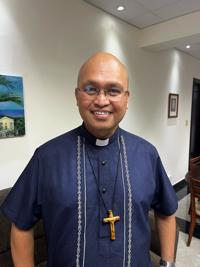Guam: Exploring the Island’s Unique Challenges and Resilience

Guam is a stunning island in the western Pacific Ocean, known for its rich culture, strategic location, and evolving history as a U.S. territory. But beyond the beaches and hospitality, Guam faces unique challenges that shape daily island life. From housing shortages to local political debates, understanding Guam’s present requires a look at its past and an eye toward the future.
Guam's Distinct Identity and Location
Located in Micronesia, Guam is the largest of the Mariana Islands—an archipelago with deep Indigenous roots. The local CHamoru people have lived on the island for thousands of years, maintaining traditions and cultural identity despite colonization and global influences. Since being declared a U.S. territory in 1898, Guam has become a melting pot of cultures, languages, and histories, offering visitors and residents a unique Pacific experience.
Housing Challenges on the Island
Life on Guam isn’t only about paradise. In recent years, the island has experienced a severe housing crisis. Skyrocketing prices and limited home availability have made it difficult for many families to secure stable housing. This situation is worsened by a significant military buildup, with approximately 5,000 U.S. Marines and their families expected to relocate to Guam in the near future. For local residents, including many Indigenous CHamoru families, homeownership is becoming an increasingly distant dream.
Angela Duenas, a Guam-based realtor, states that with the mounting military presence, demand for housing—and the cost of construction—continues to rise. As outlined in this detailed report, the average price of a single-family home is now nearly double what it was a decade ago. While military families receive housing allowances, local residents often struggle, facing a tight market and high living costs.
Social Issues and Community Resilience
Guam’s communities have shown tremendous resilience in the face of both local and external pressures. The island's Catholic community recently faced serious challenges, as highlighted in the Guam Daily Post’s examination of church abuse scandals. These societal issues remind us of the importance of accountability and supporting the vulnerable.
Despite hardships, Guam retains its vibrant spirit. Local voices advocate fiercely for more affordable housing initiatives and for the island's right to self-determination. Programs through the Guam Housing and Urban Renewal Authority aim to offer relief, but demand far outpaces supply. Residents and leaders continue to push for solutions, keeping both tradition and the community's well-being at the forefront.
Why Guam Matters
Guam is not only a tourism hotspot or military outpost. It is an island with a living, breathing culture and a population that strives for equity and sustainability. Stories about missing persons remind us that behind every headline, there are real people and families with deep connections to their home. For further updates about significant events, you can visit Kitsap Sun's coverage of recent Guam news.
Embracing Guam’s Future
Guam stands at a crossroads—a place where history, geopolitics, and community hopes intersect. While outside influences and hardships persist, so do the voices of those who call the island home. Their resilience continues to define Guam’s identity for generations to come. Whether you are planning a visit, considering a move, or simply interested in Pacific affairs, understanding Guam means appreciating its challenges, respecting its people, and recognizing their journey towards a more just and sustainable future.